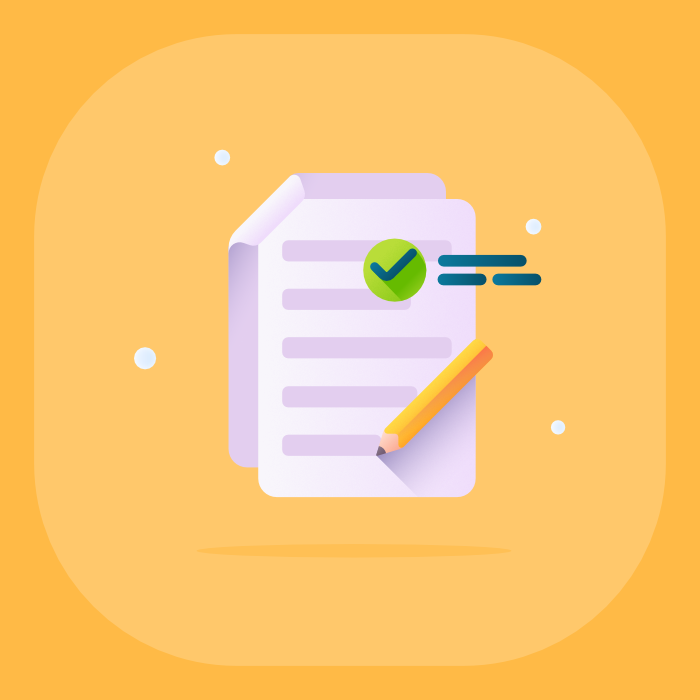You need to optimize your content for search intent if you hope to rank in search results and improve click-through rates.
People typically search the internet for a reason—no search query is purposeless.
Search intent is the ‘purpose’ behind an online search. Before you create content, you must understand: Why did the person do that search?
Are they looking for an answer to a question? Do they want to buy this product? Are they looking for more information about this topic? The purpose is typically one of a few things.
For example, can you guess the different search intents behind these search queries?
- Best drones 2020
- Drone repair near me
- DIY drone
- DJI Mavic Mini Amazon
Don’t worry if you can’t, because you will be able to by the end of this article!
In 2020, optimizing your content for search intent is one of the most crucial ranking factors. Failing to do so can jeopardize your entire marketing strategy because Google is trying to show its users the most relevant results for their queries.
Over the years, Google has improved its algorithm to the point where it can determine the exact reason behind a search beyond the exact keywords used. It can rank your page based on semantic keywords, even if the search term isn’t the same as the keywords you’re targeting in your blog.
That’s why it’s essential to understand search intent and optimize your page for the purpose behind a search query.
1. Four Types of Search Intent
In 2020, relevance was the basis of all successful SEO efforts. Google’s success as a search engine depends on this relevancy. It’s why Google gets the most users and earns the lion’s share of the ad revenue.
Regarding search intent, all search queries fall into four major groups.
Informational
Research shows that 80% of the search queries have informational intent. Most people search the internet for information on all topics, from the latest news to healthy living tips.
Google’s understanding of search intent is profound. It knows that if you search for ‘damaged hair,’ you’re looking for its cure, and hence, the SERP includes blogs and videos for damaged hair repair. Similarly, searching for ‘salsa’ gives you recipes and nutrition cards instead of their history or culinary importance.
Informational searches are typically in the form of questions. However, not all informational searches are based on questions. For example, ‘tennis champion,’ ‘Windows 10,’ ‘latest hairstyles,’ etc.
Navigational
People with navigational intent typically use branded keywords and want to reach the website they are searching for quickly. For example, people who search for ‘Pinterest’ usually want to get to the ‘Pinterest website instead of wanting to know what it is.
In this case, if you try and succeed in ranking for the keyword, ‘Pinterest,’ it would not be of any value to you unless you’re on Pinterest. Navigational searches look like ‘ahrefs keyword explorer,’ ‘google analytics,’ ‘hustle plugin,’ etc.
Transactional
During transactional searches, the searcher is in buying mode. They probably already know what they want to purchase and are only looking for the best deals. Transactional intent can contain branded or general keywords such as ‘cheap drone,’ ‘Turbotax Deluxe price,’ ‘Sony Deep Bass Earphones cheap,’ etc.
Commercial
About 93.5% of global users purchase items online. But they research products online before they can hit the ‘buy’ button. They use search terms with buying or commercial intent, like comparison phrases (foam vs. spring mattress), listicles (best automatic washing machines) or reviews (MailChimp review), etc.
It’s important to note that although these people have a transactional intent, they still need more time to research and decide on a brand.
The search intent of some queries is quite clear. Undoubtedly, the keyword ‘buy mattress’ has a buying purpose or transactional intent. However, sometimes the search intent isn’t that obvious. Let’s look at how you can quickly determine any query's search intent.
Search Modifiers
Look for those special words typically used by searchers of different search intents. These words are called intent-specific ‘keyword modifiers.’ Here are some of these words.
- Informational: How, what, who, where, why, tutorial, guide, tips, ideas, etc
- Navigational: Website name, product name, service name, etc
- Transactional: best, top, compare, review, etc
- Commercial: Buy, order, cheap, [store name] in [city, location], price, coupon, etc
SERP Features
Sometimes modifiers can be confusing, or a search query may not have a modifier that gives away the intent. If you’re in doubt or want to confirm the search intent, SERP features are a dead giveaway.
You must have noticed different SERP features for additional search terms when you search on Google. Sometimes there’s a featured snippet; other times, it’s an image carousel or a knowledge card.
Google shows SERP features to match the search intent of a query as interpreted by its algorithms.
So search for the keywords you want to rank and note the SERP features to understand the search intent. Here are some of the SERP features associated with different search intents.
- Informational: Featured snippets, Videos, People also ask
- Navigational: Site links, Knowledge panel
- Transactional: Adwords, Shopping results
- Commercial: Adwords, Featured snippet
The 3 C’s of Search Intent
SERP features are not shown for all keywords, but you can always figure out the search intent through the 3 C’s, i.e., content type, content format, and content angle. You can also use this analysis to optimize your content for search intent.
- Content-Type: Figure out the most dominant content type in the SERP for your desired keyword. Are they blog posts, product pages, or landing pages? For example, searching for “sea turtle” gets blog posts or informational content. But if you search “buy sea turtle,” you get category and product pages in the results.
- Content Format: Next, note the format of the top results for a keyword. Notice if most results are tutorials, listicles, comparisons, reviews, or other content forms. Returning to our example keyword “salsa,” almost all the SERP has recipe pages.
- Content Angle: Note the stance taken by top-ranking posts on your SERP. It predicts what searchers value most when they look up this keyword. For example, when you search for ‘buy diamonds,’ the SERP is dominated by loose diamonds. Most results mention certifications in meta descriptions and emphasize quality. So, if you pitch low cost instead, the SERP might not favor you.
Once you figure out the SERP features and the 3 C’s for your informational keyword, optimizing your content is a piece of cake. Use all the intent data you’ve gathered to guide the formation of titles, meta descriptions, headings, images, and videos.
Since most informational content is in question form, you can use the frequently asked questions related to your primary keyword in the headings, subheadings, or descriptions. Direct answers can also increase your chances of being included in SERP features.
Try to answer the central question in the first paragraph so that the search engine can quickly match the search intent to your blog. Typically, informational content is in the form of blog posts, articles, how-to guides, listicles, or tutorial videos.
4. How to Optimize for Navigational
Navigational keywords are worth optimizing so the search queries intended for your brand show your pages and not of your competitors. Your homepage and landing pages should clearly show your brand name, what it’s about, and who it is intended for.
Having landing pages for all your products and services would be best. Each page should have popular branded keywords at strategic places, such as titles, meta descriptions, headings, and subheadings.
Product and category pages should also mention popular product features, including features unique to your brand.
5. How to Optimize for Transactional
Transactional queries belong to the bottom of the sales funnel when the searcher is ready to take action. The main optimization goal here is to design the product and landing page to focus on the action the searchers intend to take.
Make sure the design elements are non-distracting. The product image should be eye-catching, with much white space to make the product name, features, and the CTA button stand out.
Use transactional keyword modifiers such as buy, order, cheap, discount, coupon, etc. in titles, meta descriptions, and headings. The CTA button should be visible on the page without needing to scroll.
6. How to Optimize for Commercial
Since these searches are done to find the best product or service, you need to optimize your content so that the competition does not outshine your offerings. Include commercial modifiers with keywords in your product and service details.
Consider writing a blog post comparing brands, products, or services. Write detailed reviews of individual products that you wish to promote. Mention their pros and cons and all the information that can ease decision-making for your customers.
Create and optimize content for all types of search intent to catch customer attention no matter where they are in their buyers’ journey. It will push your ranking up for the relevant search queries and increase click-through rates when your titles and meta descriptions convey precisely what the searcher is looking for.
And, now, back to the query in the introduction, can you guess the different search intents behind those search terms? I bet you can!
Subscribe to weekly updates
You’ll also receive some of our best posts today






